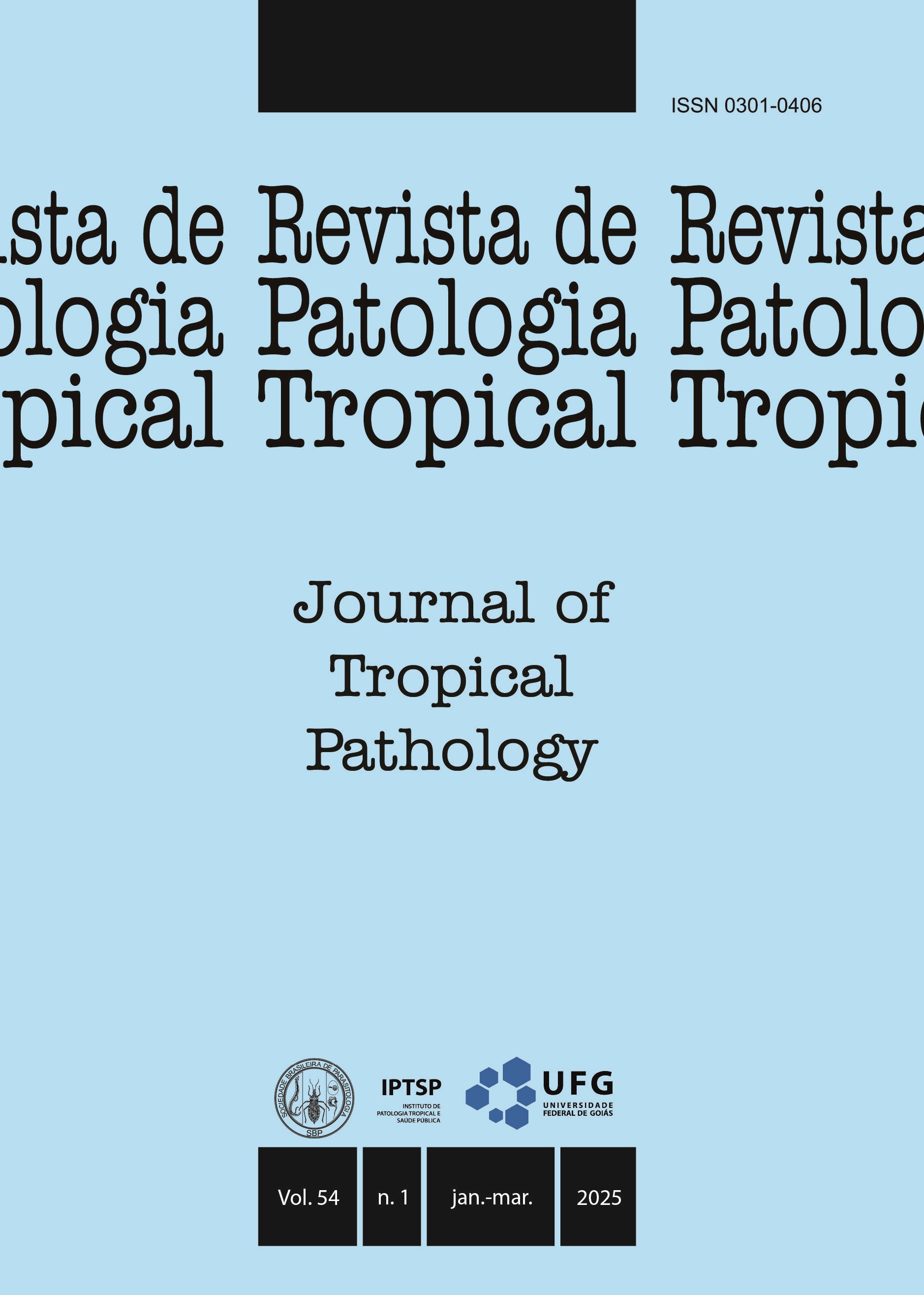First report of pseudoparasitism by Capillaria hepatica in the state of Pará, Brazil
DOI:
https://doi.org/10.5216/rpt.v54i1.81244Resumo
The nematode Capillaria hepatica (syn. Calodium hepaticum) is the etiological agent of hepatic capillariasis, a serious and uncommon disease in humans. The manifestations of this disease are persistent high fever, hepatomegaly, leukocytosis with eosinophilia, and elevated serum transaminases; the final diagnosis is confirmed with liver biopsy. Due to the biological cycle of C. hepatica, adult worms reach the liver parenchyma of the host, and the eggs are also restricted there, so they are not found in the feces. Therefore, the presence of C. hepatica eggs in human stool indicates a spurious infection or pseudoparasitism. In these cases, the probable source of contamination is the ingestion of meat, especially the liver, from infected game animals. The eggs contained in the liver of these animals are accidentally ingested and pass through the gastrointestinal tract until they are eliminated in the feces. Although likely underestimated, several spurious cases of C. hepatica have been reported in Brazil and worldwide, as subsistence hunting is still the primary food source for many rural and indigenous populations. Here, we present the first report of pseudoparasitism by C. hepatica in the State of Pará, Brazil. Considering the concept of “One Health”, where there is an intimate relationship between human, animal, and environmental health, reporting cases of pseudoparasitism is relevant for epidemiological surveillance.
KEY WORDS: Pseudoparasitism; Capillaria hepatica; capillariasis; one health.
Downloads
Downloads
Publicado
Como Citar
Edição
Seção
Licença
The manuscript submission must be accompanied by a letter signed by all authors stating their full name and email address, confirming that the manuscript or part of it has not been published or is under consideration for publication elsewhere, and agreeing to transfer copyright in all media and formats for Journal of Tropical Pathology.

